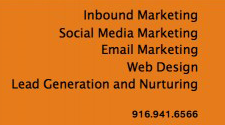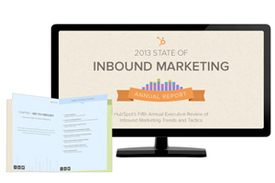
I'm sure our little town of El Dorado Hills where Domino Theory is based, is not much different from where you live. News spreads around town like wildfire. Whether good news or bad, the coconut telegraph never stops clicking out new messages. The Internet operates the same way, but it's not limited by geography. Everyone has a voice and a means to broadcast it. And while we do everything we can to make this exciting new technology work in our favor, it's inevitable that you're going to get kicked in the teeth at some point.
How you deal with a negative situation lays the groundwork for your company culture and customer relationships. Businesses deal with these situations all the time, some better than others. If you make the right decision at the right time, you have the opportunity to not only nip the problem in the bud, but even make your business look better for it.
A Smarter Business Communications Plan includes a pre-determined process for how to handle these situations. Here's ours:
Don't react emotionally. Sure, it's hurtful when bad things are said about you and your business, but when we react emotionally we tend to either fight back or rationalize and ignore the issue. Neither of these two things solves your problem and will likely escalate it. Take your time to be emotional if necessary, but work through that and get your footing solidly beneath you before you respond. It might take only a few minutes, but more likely you'll need more time than that to separate your personal feelings from your desired professional outcome.
Take the complaint to heart. Whether you agree with the complaint or not, the fact that one customer feels a certain way means there might be others who feel similarly. Most often, your customers won't complain, they'll simply take their business elsewhere. While you do everything you can to please your customers, a complaint offers an opportunity to review your products and processes find areas where you can do even better. Look at the problem as an opportunity to make your business even better.
Look at the issue from your customer's perspective. Maybe she was just having a bad day, but more likely, whether you agree or not, she feels she has a legitimate complaint. Put yourself in her shoes and think about what might turn the situation in your favor.
Most people won't remember the problem, they'll remember how you deal with the problem!
Be contrite. Even if in your heart of heats you feel you've been wronged, turning an already bad situation into a fight will not benefit your business. Apologize and start working on how you can turn an unhappy customer into an advocate. No one wants to hear excuses, what they really want to hear is how you're gong to make it right!
Publicly acknowledge the situation. Make sure everyone knows that you take it seriously, respect your customer's position and are adressing it. Then, as quickly as possible take the conversation private. Send a direct message or e-mail with an offer to discuss the experience in a more personal manner. This gives them the attention they seek without having to deal with issue in public.
Share your appreciation for the feedback. Remember, most customers won't complain, they'll just take their business elsewhere. If you're serious about this step, you have a great opportunity to improve your business and begin to turn a problem customer into an advocate.
Ask how he would like to see the problem solved. If the request is reasonable, you should meet it immediately. If the request is beyond what you can afford, explain that and offer an alternative. Keep your focus beyond the one event. Try to make your solution one that gives you another opportunity to work with the upset customer within the environment where the problem started. Help them understand that the bad experience was an exception. The goal is not to make the problem go away, but to turn a back experience into a good one.
Take this approach and you'r much more likely to have your once upset customers singing your praises - and that'something it's even difficult to get happy customers to do!
If you've enjoyed this article and found it useful, please share it with your friends and social networks by using the buttons below.











